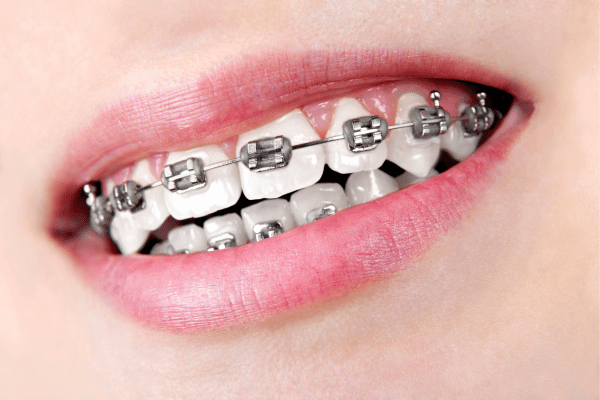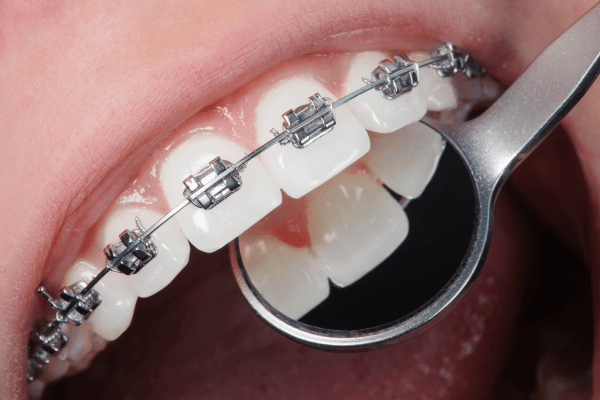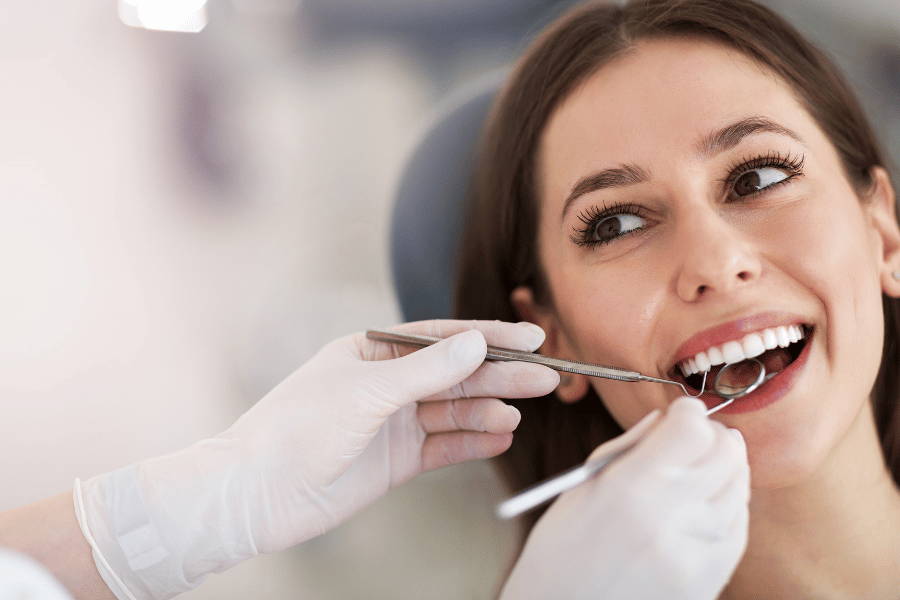Getting your teeth straightened isn’t just for kids or teenagers anymore. If you’re an adult thinking about how to get a better smile, you’re not alone. Many adults are taking steps to improve their smiles and are considering teeth straightening treatments for lots of reasons. Maybe you want to feel better about how you look, take better care of your teeth, or you’ve always dreamed of having straight teeth but never had the chance until now. This guide is here to answer all the important questions you might have about making your teeth straighter, even as an adult.
Why Consider Teeth Straightening as an Adult?
You might wonder if it’s really worth it to start this journey as an adult. Here are a few good reasons why people decide to straighten their teeth later in life:
- Healthier Teeth and Gums: Straight teeth are easier to clean, which means less chance of cavities and gum disease.
- A Confidence Boost: Many adults feel more confident with a straighter smile, whether it’s in social situations, at work, or in photos.
- Better Late Than Never: Today, there are many discreet and faster ways to straighten your teeth, so it’s never too late to get the smile you’ve always wanted.
Improved Oral Health
- Straight teeth gather less plaque because they’re easier to brush and floss properly.
- With better cleaning comes a lower risk of gum disease and tooth decay.
Boost in Confidence
- A straight smile often makes people feel better about their appearance.
- This boost in self-esteem can positively affect personal relationships and professional opportunities.
Advanced Options Available
- Modern treatments are designed to be less noticeable and more comfortable than ever.
- Options like clear aligners and ceramic braces mean adults don’t have to worry about a mouth full of metal.
Common Teeth Straightening Options for Adults

Let’s go deeper into the common methods available for adults looking to straighten their teeth, highlighting the advantages and potential drawbacks of each.
Traditional Braces
When most people think of braces, traditional metal brackets and wires come to mind. These have been the go-to solution for straightening teeth for decades.
Pros:
- Highly Effective: Traditional braces are powerful tools for correcting even the most complicated orthodontic issues, including severe misalignment and bite problems.
- Cost-Effective: In many cases, traditional braces can be more budget-friendly compared to newer treatments.
Cons:
- Visibility: The most significant downside is their noticeable appearance, which can be a concern for adults in professional or social settings.
- Dietary Restrictions: You might need to avoid certain hard or sticky foods that can damage the braces.
“Braces are very effective for straightening teeth, but their effectiveness depends on the patient’s specific orthodontic issues, their commitment, and time duration. But it’s equally important to consult orthodontists to determine the right treatment plan for your goals.” – Dr. Athar
Ceramic Braces
Ceramic braces function similarly to traditional braces but with a twist on visibility. They use clear or tooth-colored brackets that blend more seamlessly with your teeth, making them a subtler option.
Pros:
- Less Noticeable: The ceramic materials can be closely matched to your tooth color, making them far less visible than metal braces.
- Effectiveness: They offer the same level of effectiveness as traditional braces for correcting dental issues.
Cons:
- Staining: The ties used can stain, which means they require more maintenance and care to keep them looking their best.
- Cost: Ceramic braces can be more expensive than their metal counterparts.
Lingual Braces

Lingual braces are a unique option where the braces are attached to the back surfaces of your teeth, making them invisible from the front.
Pros:
- Invisibility: This option provides the most discretion since the braces are completely hidden from view.
- Efficiency: They are just as effective as traditional braces in treating most orthodontic issues.
Cons:
- Comfort and Speech: Initially, they can affect your speech and be uncomfortable against your tongue.
- Cleaning Difficulty: Lingual braces are challenging to clean due to their placement.
Clear Aligners

Clear aligners have become increasingly popular, especially among adults, thanks to their convenience and subtlety.
Pros:
- Near-Invisibility: These aligners are made from clear plastic, making them hard to notice at a glance.
- Removability: You can take them out for eating, drinking anything other than water, and for oral hygiene practices, making them a convenient option.
- Comfort: Without wires or brackets, clear aligners are generally more comfortable to wear.
Cons:
- Discipline Required: For them to be effective, you need to wear them for at least 22 hours a day, requiring a high level of commitment.
- Cost: Clear aligners can either be more affordable or expensive than metal braces, depending on the treatment duration and the brand you choose.
Choosing the right teeth straightening option as an adult involves considering your personal, professional, and financial circumstances. Each method has its unique benefits and potential drawbacks, but the end goal is the same: achieving a straighter, healthier smile.
How to Choose the Right Option for You
The journey to a straighter smile is a great step for your oral health, making the choice of treatment a personal one. Here are some guidelines to help you make the best decision for your needs:
“Orthodontic treatment requires personalized assessment and supervision because the buzz around online teeth straightening often centers on accessibility and convenience. It is advised to go for consultation from a professional orthodontist which ensures a tailored approach, expert guidance, and optimal outcomes for a confidently aligned smile.” – Dr. Athar
Consultation with a Dentist or Orthodontist
The first step in your teeth straightening journey is to consult with a professional. An orthodontist or dentist can assess your teeth and recommend the best course of action based on their expertise. They’ll consider the complexity of your case, your oral health, and what you hope to achieve with treatment.
- Professional Assessment: Your orthodontist will take a close look at your teeth, possibly using X-rays or digital scans, to understand your specific needs.
- Personalized Recommendation: Based on this assessment, they’ll suggest the most effective treatment for your situation, taking into account your preferences and concerns.
Consider Your Lifestyle

Your daily activities, job, and social engagements can influence which teeth straightening option you choose. For instance, if you’re often in public or client-facing roles, you might prefer a less visible treatment option for your teeth.
- Visibility: Consider how much the appearance of braces or aligners will impact you socially or professionally.
- Maintenance: Think about how much time and effort you’re willing to invest in the care and maintenance of your chosen treatment.
Budget Considerations
Cost is a significant factor for many adults considering teeth straightening. The price can vary widely between different treatments, so it’s crucial to understand all related expenses, including consultations, adjustments, and any necessary aftercare.
- Insurance Coverage: Check if your dental insurance offers any coverage for orthodontic treatments and what options are included.
- Payment Plans: Many orthodontists offer payment plans to spread out the cost of treatment, making it more accessible.
What to Expect During the Process
Going on a teeth straightening treatment is a commitment, and knowing what to expect can help you prepare mentally, physically, and financially. Here’s an explanation of the process:
Initial Consultation
Your first visit to the orthodontist is about getting to know your options. This appointment typically involves a thorough examination of your mouth, discussions about potential treatment plans, and sometimes, initial impressions or scans of your teeth.
- Discussion of Goals: Be open about what you hope to achieve with treatment, as this will guide the recommended options.
- Financial Planning: This is also the time to discuss costs, insurance, and payment plans.
The Treatment Plan
After evaluating your needs, your orthodontist will create a tailored treatment plan. This plan outlines the type of treatment recommended, the estimated duration, and any preparatory work needed before starting.
- Customization: Each treatment plan is customized to the individual, ensuring the best possible outcome.
- Timeline: Understanding the estimated timeline helps set realistic expectations for the journey ahead.
The Adjustment Period
Regardless of the chosen method, there’s usually an adjustment period where you get used to your new appliance. This can involve learning how to clean your braces or clear aligners, managing any initial discomfort, and adjusting to eating with braces or aligners.
- Discomfort Management: Your orthodontist can offer tips for managing any soreness or discomfort during the first few weeks.
- Lifestyle Adjustments: You may need to modify your diet or oral hygiene routine to accommodate your treatment.
Starting your teeth straightening journey as an adult can be a significant but rewarding decision. By carefully considering your options, consulting with professionals, and preparing for the process, you’re taking a big step towards not just a more attractive smile, but also improved oral health and confidence.
Final Thoughts
In concluding our guide to teeth straightening for adults, it’s evident that going on this journey can significantly enhance not just the aesthetics of your smile but also your oral health and overall confidence. With a variety of treatment options available, from traditional braces to clear aligners, adults no longer need to shy away from achieving the smile they’ve always desired. Remember, the key to a successful treatment lies in choosing the right option for your needs, diligently following your orthodontist’s care instructions, and maintaining excellent oral hygiene throughout your journey.
FAQs
1. How long does teeth straightening typically take for adults?
The duration varies significantly depending on the complexity of the case and the chosen treatment method. On average, it can range from 6 months to 2 years. Your orthodontist can provide a more accurate timeline based on your individual needs.
2. Is teeth straightening painful?
While not painful, you may experience some discomfort, especially following an adjustment or when switching to a new set of aligners. This discomfort typically subsides within a few days and can be managed with over-the-counter pain relief.
3. Can I straighten my teeth without braces?
Yes, clear aligners are a popular braces alternative for adults. They are nearly invisible and can be removed for eating and cleaning, offering a more discreet and convenient option for teeth straightening.
4. Are there any risks associated with teeth straightening?
As with any dental treatment, there are potential risks, such as tooth decay, gum disease, or discomfort from the appliance. However, these risks can be minimized with proper care, maintenance, and regular check-ups with your orthodontist.
